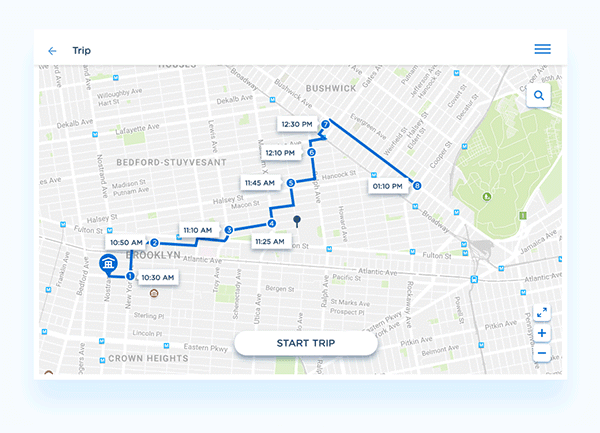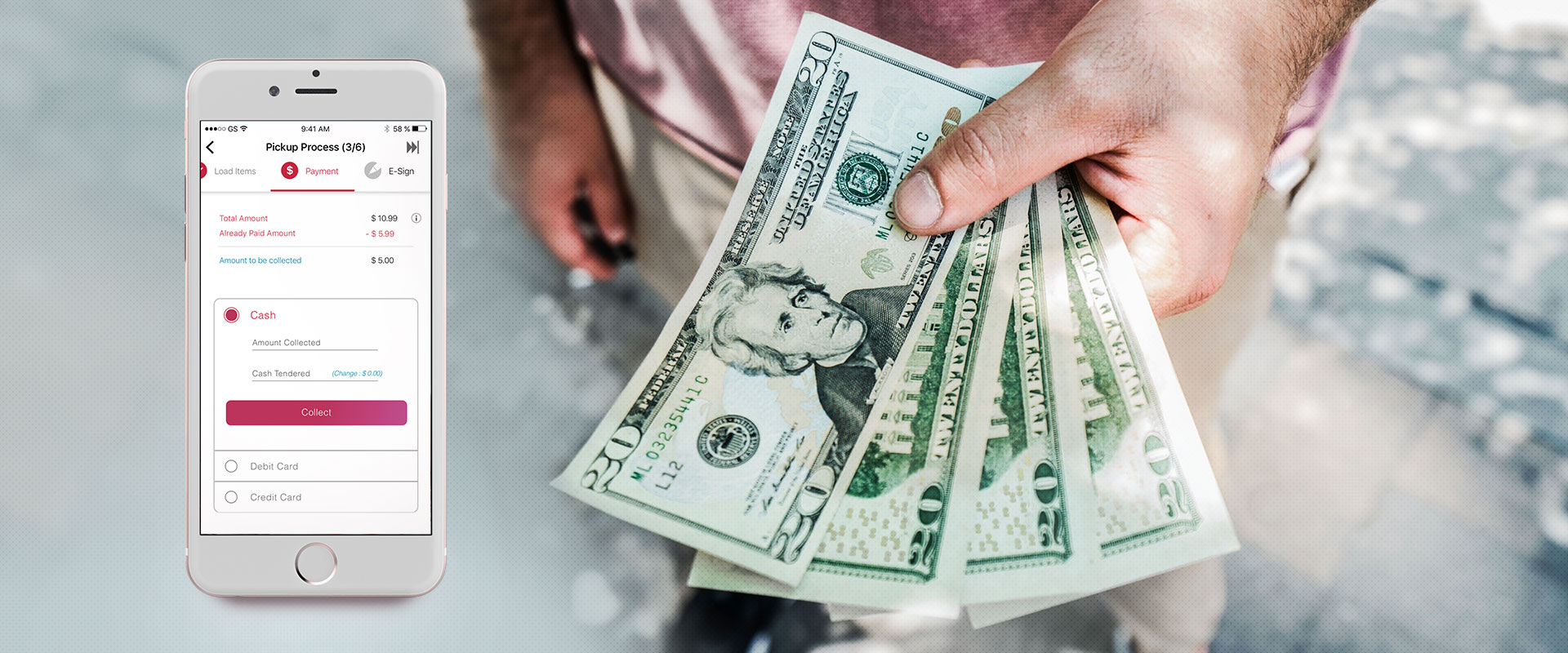Feature Snapshot! App-Driven Last Mile Delivery Optimization
Enterprise mobility solutions, specifically last mile delivery software, are ushering in a new era of benefits by enhancing the efficiency of resource movement. As various industries prioritize consumerism, there’s a growing emphasis on satisfying global retail and e-commerce demands. Recognizing the dynamic nature of last mile delivery, which is crucial for end-customer satisfaction, becomes paramount in this evolving landscape.
Tapping into the efficiency of the execution at the ground-level, it’s important that the delivery personnel are well-acquainted with the technology in use and understand how its use benefits them, the company, and the customer. This can be achieved by utilizing intuitive designs and simplistic yet high-performing interfaces for the delivery personnel mobile application.
Let’s understand how LogiNext has managed to create such a design to drive efficiency and productivity from the on-ground delivery personnel and field agents.

LogiNext’s Intuitive and High-Functioning Mobile App
The application itself is extremely light on battery usage and memory space. The app is completely crash-free and secure. All information captured within the app is synced with the central client system in real-time. In case of any problem with network coverage, the information would be stored in offline mode and get synced when the network reappears.
The application comes with its own proprietary lossless image compression mechanism which records HD images as proofs and compresses them without any loss of data. This means that the entire app can function seamlessly even in areas with slow networks or with 2G networks.
Attendance Management
Delivery personnel can easily log-in into their app. The log-in is a unique and secured gateway which can be managed remotely from the client’s end. In case of any breach, all information from the mobile can be wiped off by the manager from within the system.
The delivery personnel can mark their attendance from within the app. It would be mapped to their location and a time stamp. It is an easy way to start the trip where the starting position need not be the originating branch. Even in the case of a branch origin, the attendance management is an important factor in the planning. The manager would have clear and complete information of how many delivery personnel are on-duty and where they are.
Order Planning
The delivery personnel can start their planned trip from the application. They can view the entire list of orders that they have to fulfill in the day. They can also view the planned sequence for all these orders (optimized to reduce their total distance traveled and their turnaround time).
They can find all the details of the order, such as the address, the receiver’s name, and a direct calling option which would connect them to the end receiver. They can view their current orders and the completed order within the same screen.
Address Verification
While on an order, they can click on it and be directed to the map view wherein they can exactly see where the destination lies. The addresses within the system are verified using more than a billion data points. Using machine-learning the address is verified against multiple parameters reducing errors (almost nullifying) by a large margin.
This means that the delivery personnel no longer have to spend precious on-field time searching for flawed addresses and calling the end-customers/receivers to confirm the destination. Over and above the time cost (and subsequent delays) of searching for flawed addresses, the branding cost of asking the customer for address verification is large.
Even if we account at the minimalistic level, a delivery personnel may spend an hour a day to search for various addresses. Consider there are 20 delivery personnel in a branch, and they function for 30 days in a month, then around 600 hours are spent just searching for destinations. LogiNext’s verified addresses and easy map interface to direct the delivery personnel properly helps companies save on these wasted hours.
Route Optimization and Dynamic ETA Management

The routes suggested within the application are optimized for local traffic and weather conditions. While saving on travel time, avoiding unnecessary delays and detention, the delivery personnel can reach their destinations on time.
As the delivery is being tracked in real-time, the predicted estimated time of arrival (ETA) of all deliveries are accurate. This can be estimated using delivery management software This helps in managing the expectations at the customer’s end, boosting overall satisfaction. Moreover, in case of any delay or detention, the client and the customer are duly and timely alerted with messages about the same. This helps bring transparency and clarity to the delivery process.
Service Time Tracking
The application can track the service time of each delivery interaction in real-time. From the point of check-in where the delivery person starts the handover process to the point where the person check-outs after the delivery is fulfilled, the service time is recorded precisely for future use.
Companies require exact service time in order to better plan their delivery schedules and account for ample face-time with the end-customer. Service time optimization can be an effective tool to strategically reduce overall turnaround time while balancing the quality of the interactions with the receiver.
Feedback Capture
The delivery personnel can record the feedback of the receiver at the time of the handover. The respective comments and reviews would be added in the application and synced in real-time with the central system. The supervising manager would then have clarity on the satisfaction levels of the customers. If any action needs to be taken to acknowledge or placate any customer, such remedial actions can then be put into place. It also gives effective real-world insights regarding the product and service associated with the brand.
Scanning of Orders – Unloading

Orders can be scanned as they are unloaded (or handed over) to the receiver. Unloading of the orders is simple and error-free as each unit can be scanned using the mobile camera. The app would record the bar-code instantly. This is also effective in the case of partial deliveries where only some units from the crate have to be handed over at a select destination. Such multi-destination orders are easy to manage and execute using LogiNext’s application.
Electronic Proof of Delivery
Proof of delivery is done in two steps. First, the delivery person would use the app (and the mobile camera) to click a photo of the order at the point of handover. This reconfirms the state of the order. The order number and other details are also captured in this image.
The receiver would the e-sign functionality within the application to authorize the delivery. Such verification is essential for transparency of invoicing and overall accountability within the entire delivery process. The images go through lossless compression and are synced with the central system in real-time or in offline mode.
Cash and Collect on Delivery Management

The delivery person can handover using a prepaid mechanism where the order has already been paid for, or use collect on delivery from within the application. LogiNext has integrated with multiple payment enablers where the delivery personnel can simply swipe the receivers card to complete the transaction.
Digital payments are a great way to fulfill transactions from within the application. Beyond this, the delivery personnel can also collect the necessary amount in cash. The collected amount is recorded in the system and processed in real-time. Once the transaction and the handover are complete, the delivery personnel can proceed to check-out.
Check-Out: Completed, Partial, or Failed
Here the delivery personnel can select whatever status suits the current delivery. If it is completed in its entirety, then the delivery personnel would select the relevant option. However, in a scenario where the delivery was partial or would be recorded as failed, the delivery person would select the same and give supportive reasons for the same.
These reasons help the supervising manager to further take corrective measures. The fulfilled orders are displayed in the app’s order screen accordingly. Completed orders would be in the ‘completed’ section and the incomplete ones would be the ‘incomplete’ section. If any order is rescheduled for any reason (requested by the receiver) then the same would be added back to the order list for that day for a subsequent day.
Cash Deposits
The collected cash would be shown as an amount in the app dashboard. The delivery personnel has the option to deposit the same cash when they are on-field. The receipts (or proofs) for such deposits can be recorded within the system. The amount deposited would be subtracted from the cash-in-hand displayed in the application.
The app dashboard offers a working profile for the delivery personnel giving them all the information, support, and directives to successfully complete their delivery route.
Auto-Allocation of Pick-up Requests
On-demand pick-up and delivery requests can also be auto-allocated to the delivery person in the vicinity of the request’s originating location. The system would auto-allocate based on closeness, idle capacity, and time required to fulfill the request. The delivery person has the option (if it has been set by the client) to accept or reject the request, in which case it would be assigned to the next closest person, and so on. The delivery person can also choose to go on ‘break’ when they don’t want to receive such on-demand requests.
The entire delivery process is automated and simplified using LogiNext’s web and mobile applications increasing overall efficiency while reducing the total cost of resource movement.
236







@LogiNext